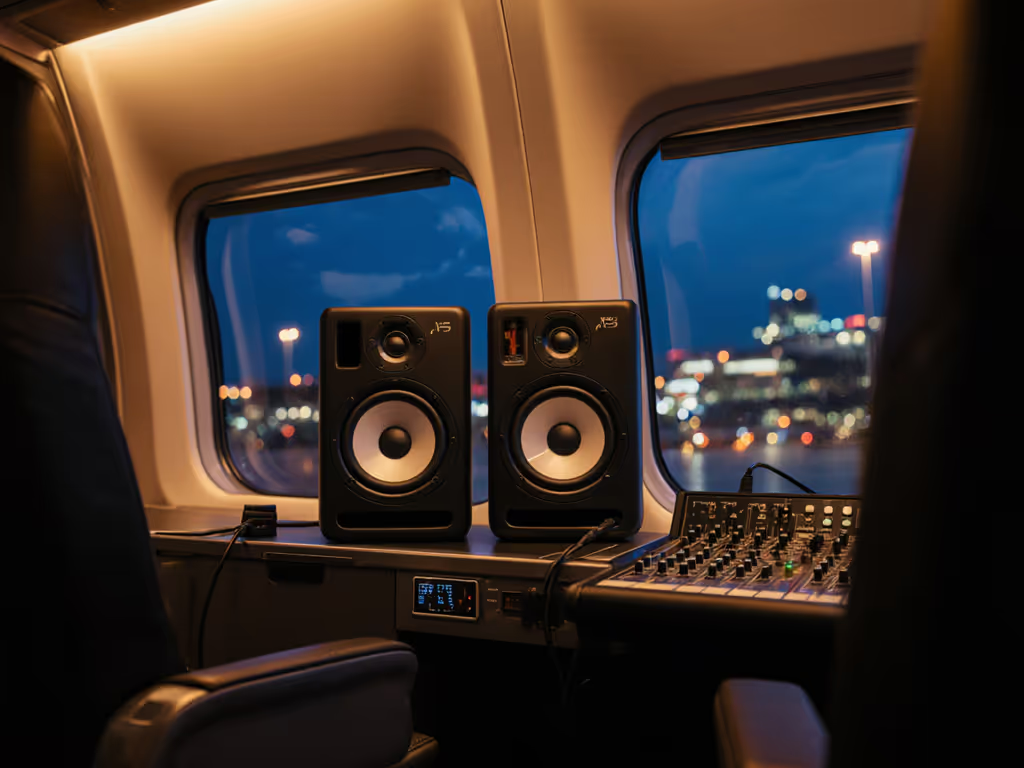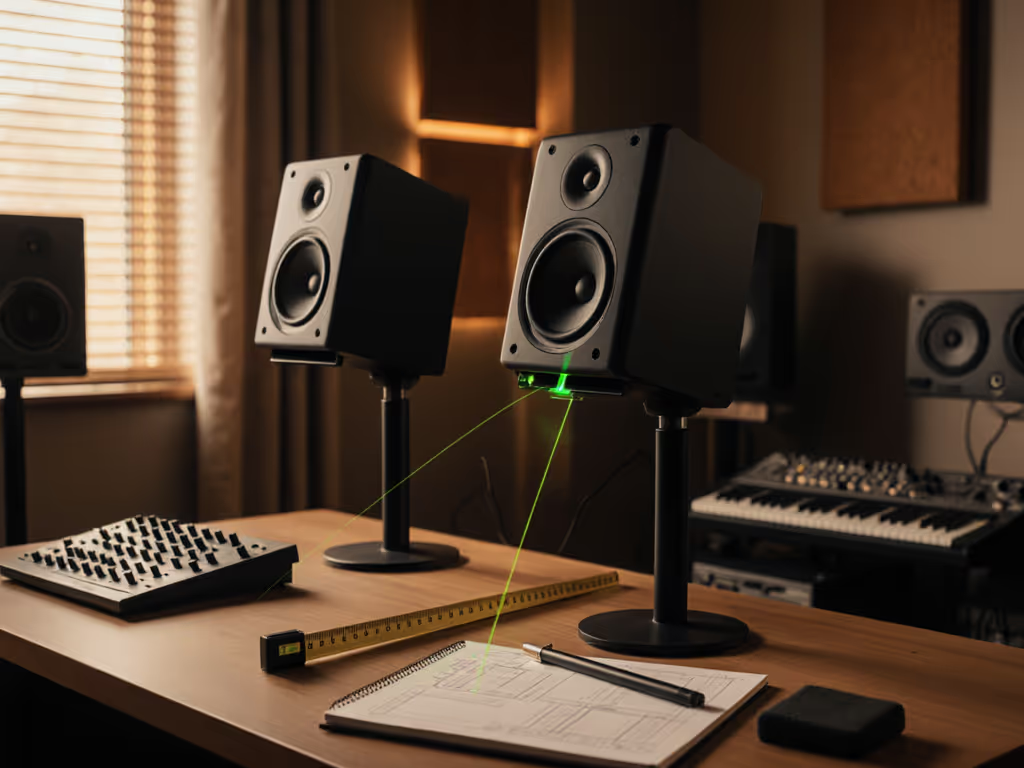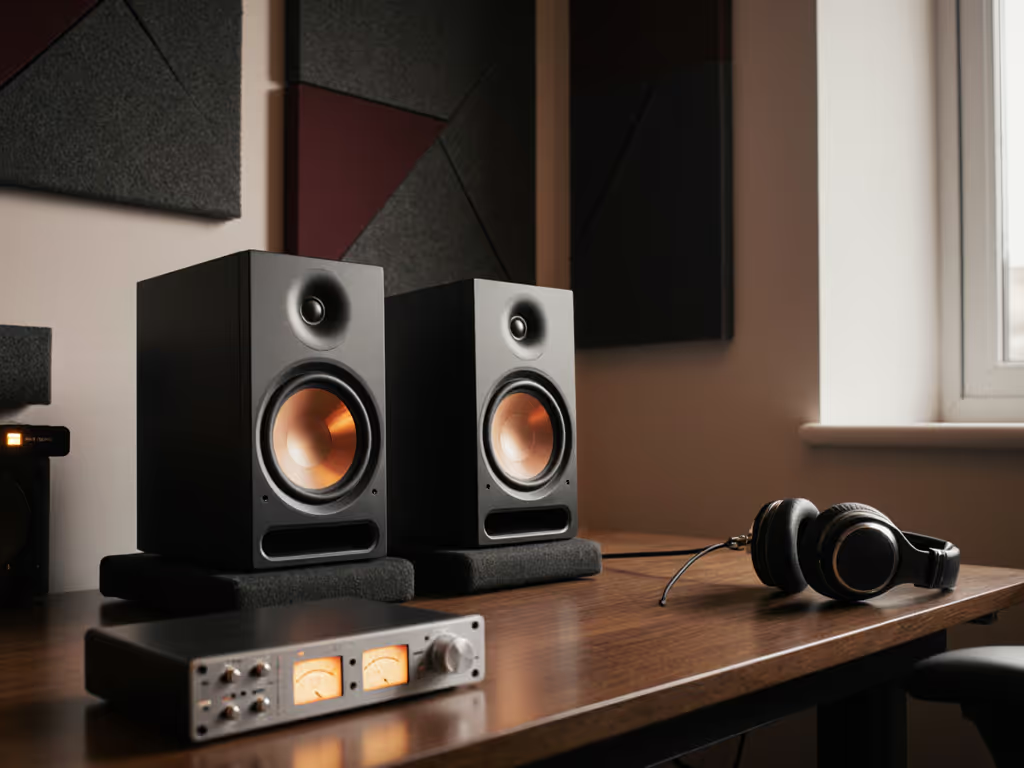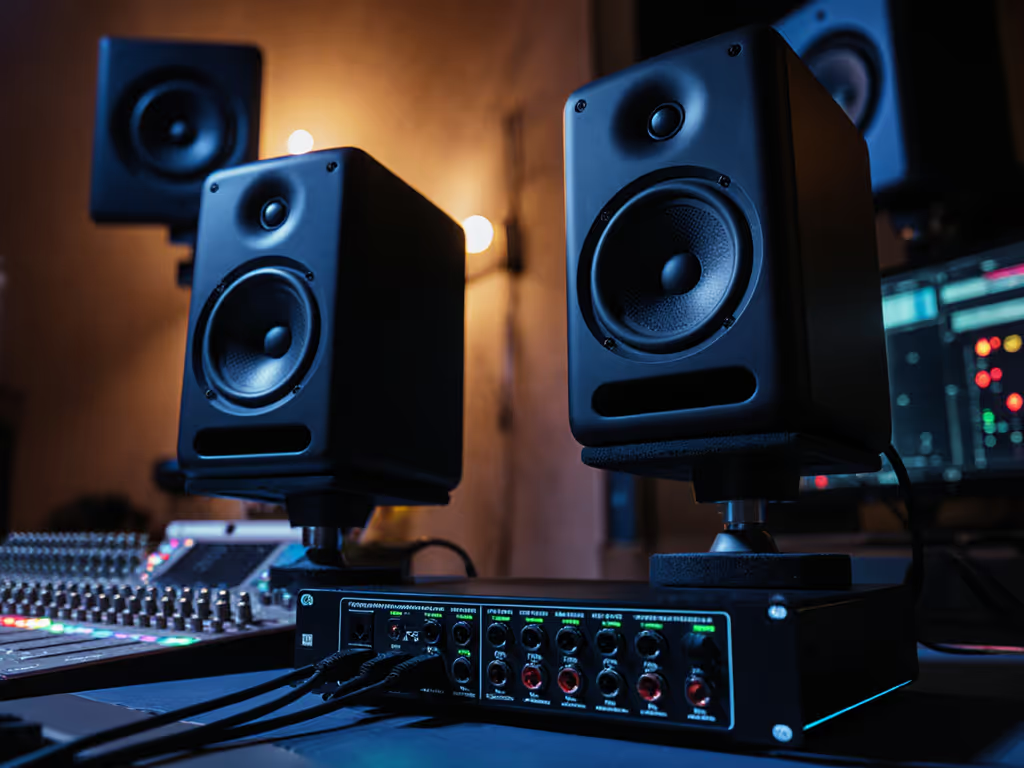
Stop Desk Reflections: Ideal Studio Monitor Height Guide

If you're struggling with inconsistent mixes that fall apart on earbuds or mobile devices, the problem likely isn't your best studio monitors (it's how they're positioned). Most creators overlook a critical factor that smears your midrange clarity and collapses your stereo image: desk reflections. When your studio monitors sit flush on your workstation, sound waves bounce off your desk surface before reaching your ears, creating phase cancellations that make critical decisions impossible. The solution isn't expensive treatment (it's precision geometry that takes just 15 minutes to implement). Set it quiet, keep it honest.
Why Monitor Height Decides Your Mix's Fate
Desk reflections are sneaky mix killers. When your tweeters fire directly at your desk surface, sound waves reflect upward with only a millisecond delay. At typical nearfield distances (0.7-1.2 m), this creates comb filtering between 800 Hz and 3 kHz (the exact range where vocal clarity and instrument definition live). I learned this the hard way after burning out my ears chasing volume peaks, only to discover my 'perfect' mixes sounded muddy everywhere but my room.
Quiet monitoring reveals truth faster than loud, sporadic sessions (but only when your monitors speak to your ears, not your desk).
Here's what happens at common desk heights:
- At chest level (common with monitors on desks): Waves reflect upward at 45°, hitting your ears 0.5-1 ms late (enough to smear transients)
- At eye level (optimal): Direct sound path eliminates first-surface reflections, preserving transient accuracy
- Above head height: Vertical dispersion patterns cause uneven high-frequency response as you shift position
Your target: Align the tweeter axis with your ear line. For most two-way systems, this means 1.2-1.4 m from floor to tweeter center (typically requiring 15-25 cm of elevation when sitting at a standard desk).
Step-by-Step Height Calibration (Takes 12 Minutes)
Follow this ritual before your next session (no measuring tape required):
-
Timer cue: 3 minutes: Sit in your mixing position and close your eyes. Notice where your gaze naturally falls when focused on your DAW. Mark this spot on your monitors' front panel with washi tape. This is your personal ear-height axis.
-
Timer cue: 4 minutes: Place a book spine-down on your desk under each monitor. Play pink noise at 75 dB SPL. Rotate the books to create 10-15° upward tilt until the high frequencies sound smoothest (not brighter). Remove one book at a time until clarity dips, then put the last book back. This is your reflection-free height.
-
Timer cue: 5 minutes: Verify with vocal material. Load a familiar dialogue clip or sung phrase. Ideal height delivers consistent sibilance and consonant clarity whether you sit upright or lean back 5 inches. If "s" sounds change dramatically with tiny head movements, tilt monitors down 2°.
Pro tip: Bookmark this checklist for daily setup:
- Ear-height axis marked on monitors
- Minimal tilt (10-15° max upward)
- Pink noise test confirms smooth HF response
- Vocal material maintains clarity during posture shifts
- SPL at 70-75 dB during critical listening
Dealing with Room Acoustics When Space Is Tight
Small rooms amplify placement errors. For a deeper explanation of how reflections, boundaries, and absorption affect what you hear, see our room acoustics guide. When walls are closer than 1.5 m, follow these space-saving adaptations:
For narrow desks (under 60 cm deep): Angle monitors outward 5° instead of inward. This prevents early side-wall reflections from smearing the image while maintaining a 60° triangle. Test with a clap, and reverb should decay cleanly within 200 ms.
For shared living spaces: Lower your target SPL to 68 dB for nighttime work. Good monitors maintain phase coherence down to 70 Hz at these levels. If your low-end disappears, raise monitors 5 cm, which reduces floor bounce interference in the critical 80-120 Hz range where small rooms lie.
For multi-use rooms: Create a 'quiet mode' setup: Lower monitors to desk height but add a 3 cm thick folded towel along the front edge of your desk. This absorbs early reflections during quick edits while preserving your main height setup for final passes.
Perfecting Toe-In Angle for Speakers
Your height adjustment unlocks accurate toe-in. Most creators over-rotate their monitors, creating a narrow sweet spot. Here's the field-tested method:
- Sit centered and extend your arms straight ahead
- Have a friend rotate each monitor until the tweeter points exactly at your elbow crease
- Play a stereo test track with centered vocals and panned elements
- Nudge inward 3° at a time until:
- Center image locks sharply between speakers
- Panned instruments don't "jump" when you move
- Your shoulders don't tense from auditory strain
Stop when the mix feels comfortable (not exciting). Over-toed monitors create false clarity that disappears on consumer devices. Your ideal studio monitor height enables natural dispersion that translates everywhere.
Building Your Quiet Monitoring Ritual
True translation comes from consistency, not volume. Implement this daily routine:
- 7:00 AM session: Work at 75 dB SPL for 45 minutes (use a timer). Focus on balance and low-end decisions.
- 2:00 PM session: Dial to 70 dB SPL. Verify vocal clarity and high-frequency continuity.
- 9:00 PM session: If needed, 68 dB SPL for 30 minutes. Only address translation issues, never make new creative decisions.
Place sticky notes with "SPL CHECK" on your monitor controls. Every 20 minutes, glance at your meter. If it's above 75 dB, stop what you're doing and reset to 70 dB for 5 minutes before continuing. This builds muscle memory for sustainable levels.
Your Actionable Next Step
Today, before your next session:
- Set a 12-minute timer
- Complete the height calibration ritual
- Play your most trusted reference track at 70 dB SPL
Notice how the snare crack and vocal breaths now occupy precise locations in space. This isn't about 'better' sound (it's about hearing what's actually there). When you remove desk reflections, your best studio monitors finally tell the truth. You'll spend less time second-guessing and more time delivering mixes that clients approve on the first pass.
The quiet work that translates beats loud work that impresses. Tomorrow, you'll sit down knowing your setup reveals reality, not room artifacts. Set it quiet, keep it honest.



